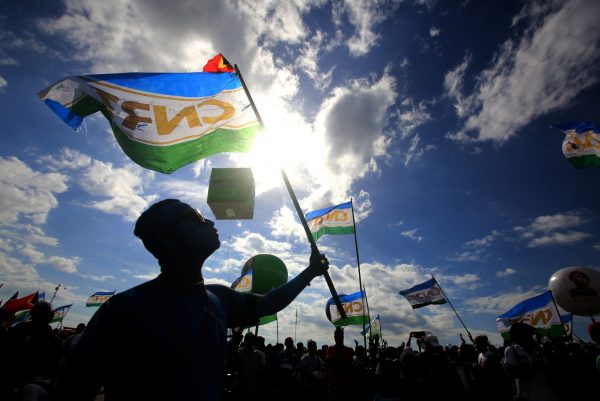There were presidential and parliamentary elections in Timor-Leste in 2017, both of which were peaceful. The election outcomes indicated that the country’s ‘government of national unity’ (which was made up of the National Congress for Timorese Reconstruction (CNRT) and Fretilin) would continue. In it, a younger generation of political leaders was expected to be taking over from the ‘Generation of ‘75’.
What happened instead is that Timor-Leste’s controversial first prime minister Mari Alkatiri resumed his former office heading a Fretilin-led minority government. How had this come to pass?
Under Timor-Leste’s constitution, the president can choose as prime minister either the person who is the head of the party that has received the most votes or who heads a majority coalition in the Parliament. The first option does not require that person’s party have gained a majority. East Timorese President Francisco ‘Lu-Olo’ Guterres (who is also President of Fretilin) chose the former and appointed his political colleague Mari Alkatiri as prime minister.
A majority opposition coalition later formed a political alliance and asked Guterres to make them the government instead. When Guterres refused, the majority alliance responded by voting down the government’s program and associated budget. When the Parliament eventually reconvened, the inevitable defeat ensued.
If the opposition votes down the government’s program a second time, it automatically triggers new elections. To forestall that outcome, in November and into December, Prime Minister Alkatiri refused to reconvene the Parliament and claimed that the opposition alliance was attempting to stage a ‘coup’.
The fractious falling out between the government and the opposition in part reflected a change in the terms of an earlier agreement between Alaktiri and CNRT leader Xanana Gusmao on the formation of a new national unity government. This falling out was compounded by the fact that Alkatiri managed to alienate both the Popular Liberation Party and smaller youth-oriented KHUNTO party after each had agreed to join Fretilin in government.
Even the Democratic Party (which ended up in coalition with Fretilin in the minority government) had initially rejected such a coalition arrangement. In each case, party leaders complained of a ‘lack of inclusion’ — a reflection of Alkatiri’s controlling political style.
The impasse between the government and opposition was also due in part to the personalities of Alkatiri and Gusmao. Both are dominant and dominating political figures. Both are autocratic in their political style and have a long history of animosity that was papered over by the establishment of the government of national unity in 2015.
What Timor-Leste has witnessed is a clash of egos more than a clash of policy or ideology. Alkatiri had long wanted to return to the office taken from him in 2006 when he was forced to resign. Gusmao had only been content not being prime minister so long as he retained final decision-making power as he had under the national unity government.
The slump in his CNRT party’s support was what led to Gusmao losing control. Support for the CNRT fell from over 36 per cent in 2012 to just under 30 per cent. Critically, the CNRT received 0.2 per cent less of the vote than Fretilin, which gave it one less seat in the Parliament.
The appointment of Alkatiri ran contrary to the previous government’s move to a younger (and less controversial) prime ministerial candidate: Fretilin’s Rui Araujo. On the strength of a 0.2 per cent majority, Alkatiri claimed the prime ministership and broke the understanding he had with Gusmao that this position would be handed to a younger politician.
The CNRT, the Popular Liberation Party and KHUNTO — together forming the ‘Parliamentary Majority Alliance’ — hold 35 of the Parliament’s 65 seats as opposed to the Fretilin–Democratic Party government’s 30 seats.
Timor-Leste’s parliamentary legislation requires the Parliament to meet weekly, and its failure to do so in November and early December led to the Parliamentary Majority Alliance claiming that the government is now ‘unconstitutional’. Beyond that, the country’s budget is decided on a calendar-year rather than a financial-year basis. As a result, the government could choose to enter 2018 having run out of money or to bite the bullet and reconvene parliament. It was finally forced to do the latter out of necessity. Both sides of the Parliament and their supporters are now deeply (and seemingly irrevocably) entrenched in their opposing positions.
The Parliament reconvened towards the end of the year to try to cover what would have been a budgetary shortfall. It did so and wqas again voted down triggering new elections.
Elections cannot be called within six months of previous elections, which means elections cannot be called before 22 January 2018. Short of an improbable reconciliation, elections could then be expected to be held in April of that year. Given the deteriorating political environment in Timor-Leste, if new elections are held, they and the their lead up are unlikely to reflect the peace and harmony that characterised those of 2017.
Damien Kingsbury is Personal Chair and Professor of International Politics at Deakin University and Coordinator of the Australia Timor-Leste Election Observer Mission.
This article is part of an EAF special feature series on 2017 in review and the year ahead.

